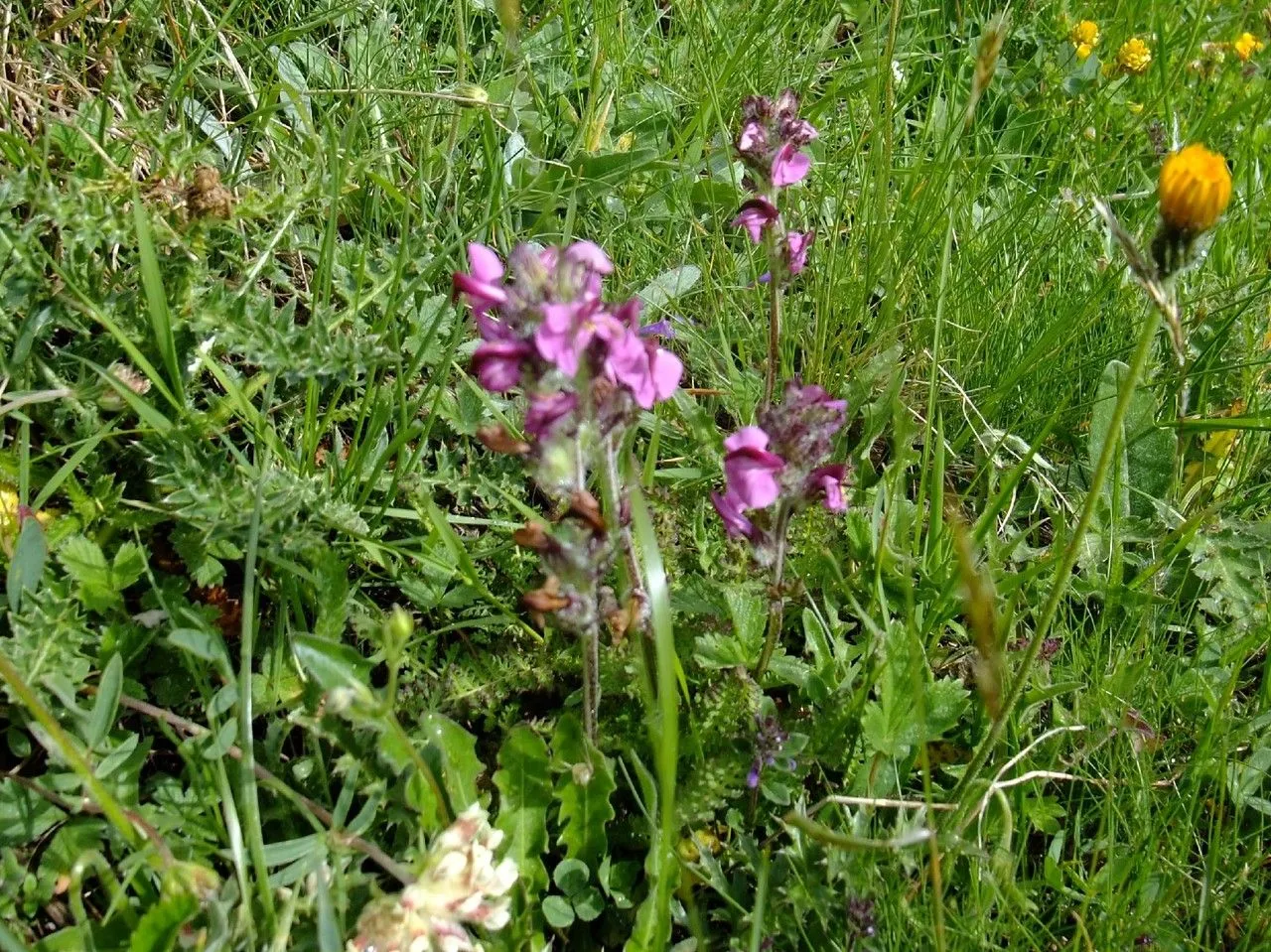
Author: Crantz
Bibliography: Stirp. Austr. Fasc., ed. 2: 317 (1769)
Year: 1769
Status: accepted
Rank: species
Genus: Pedicularis
Vegetable: False
Observations: E. Alps
Flesh-pink lousewort, known scientifically as Pedicularis rostratospicata, is an enchanting member of the Orobanchaceae family. Renowned for its delicate, flesh-pink blooms, this plant paints a picturesque view against the rugged backdrop of its native habitat in the Eastern Alps.
Firstly described by Crantz in 1769, Pedicularis rostratospicata has captivated botanists and nature enthusiasts alike with its unique floral arrangement and subtle hues. The plant’s elegant flowers serve not only as a visual delight but also play an essential role in the alpine ecology, contributing to the intricate web of flora that thrives in these elevated terrains.
The distinguishing feature of the flesh-pink lousewort is its densely packed floral spikes adorned with subtle pink blossoms, each intricately shaped and possessing a gentle curve. These striking inflorescences arise from a leafy, branching stem that stands resilient and upright amidst the harsh alpine climate. The plant typically flourishes in moist, well-drained soils, often gracing the mountain meadows with its presence during the warmer months.
As with many alpine plants, Pedicularis rostratospicata has adapted to the challenging conditions of high altitudes. Its root system and foliage have evolved to efficiently conserve and utilize the limited nutrients available in such environments, ensuring its survival and propagation across the rocky landscapes of the Eastern Alps.
Despite its beauty and ecological significance, the flesh-pink lousewort remains a relatively rare sight, its distribution limited to specific alpine regions. Conservation efforts and further botanical studies are crucial to understanding and preserving this delicate species, safeguarding its natural habitats from the threats of climate change and human encroachment.
In summary, Pedicularis rostratospicata, the flesh-pink lousewort, is a botanical gem of the Eastern Alps, celebrated for its soft pink flowers and robust adaptation to alpine ecosystems. Detailed in Crantz’s 1769 publication, this plant remains an enduring subject of admiration and study within the botanical community.
Deu: fleischrotes läusekraut, ähren-läusekraut
En: Flesh-pink lousewort
Nl: Vogelkopkartelblad
De: Ähren-Läusekraut, Ähriges Läusekraut, Fleischrotes Läusekraut
Taken Jul 10, 2010 by Tela Botanica − Yoan MARTIN (cc-by-sa)
Taken Jul 18, 2019 by Catherine Gervois (cc-by-sa)
Taken Jul 21, 2021 by Jean-Dominique Poveda (cc-by-sa)
Taken Jul 20, 2021 by Cédric Jankowiak (cc-by-sa)
Taken Aug 5, 2021 by wb203 (cc-by-sa)
Taken Jul 21, 2012 by Tela Botanica − Yoan MARTIN (cc-by-sa)
Taken Jul 21, 2012 by Tela Botanica − Yoan MARTIN (cc-by-sa)
Taken Jul 15, 2010 by Tela Botanica − Yoan MARTIN (cc-by-sa)
Taken Jul 16, 2012 by Tela Botanica − Yoan MARTIN (cc-by-sa)
Taken Jul 16, 2012 by Tela Botanica − Yoan MARTIN (cc-by-sa)
Taken Jul 20, 2021 by Cédric Jankowiak (cc-by-sa)
Taken Jul 20, 2021 by Nadine Castel (cc-by-sa)
Taken Jul 21, 2012 by Tela Botanica − Yoan MARTIN (cc-by-sa)
Taken Jul 10, 2010 by Tela Botanica − Yoan MARTIN (cc-by-sa)
Taken Jul 16, 2012 by Tela Botanica − Yoan MARTIN (cc-by-sa)
Taken Jul 11, 2021 by Sylvain Piry (cc-by-sa)
Taken Aug 20, 2021 by Pietro Brignoli (cc-by-sa)
Taken Jul 15, 2005 by Photoflora – Benoit BOCK (©)
Taken Jan 1, 1970 by Photoflora – L’Abbé COSTE (©)
Taken Jul 15, 2008 by Photoflora – Benoit BOCK (©)
Ph maximum: 9.0
Ph minimum: 8.0
Light: 7
Atmospheric humidity: 6
Soil nutriments: 4
Family: Myrtaceae Author: (F.Muell.) K.D.Hill & L.A.S.Johnson Bibliography: Telopea 6: 402 (1995) Year: 1995 Status:…
Family: Rubiaceae Author: Pierre ex A.Froehner Bibliography: Notizbl. Bot. Gart. Berlin-Dahlem 1: 237 (1897) Year:…
Family: Sapindaceae Author: Koidz. Bibliography: J. Coll. Sci. Imp. Univ. Tokyo 32(1): 38 (1911) Year:…
Family: Asteraceae Author: A.Gray Bibliography: Pacif. Railr. Rep.: 107 (1857) Year: 1857 Status: accepted Rank:…
Family: Fabaceae Author: Medik. Bibliography: Vorles. Churpfälz. Phys.-Ökon. Ges. 2: 398 (1787) Year: 1787 Status:…
Family: Aspleniaceae Author: (Cav.) Alston Bibliography: Bull. Misc. Inform. Kew 1932: 309 (1932) Year: 1932…